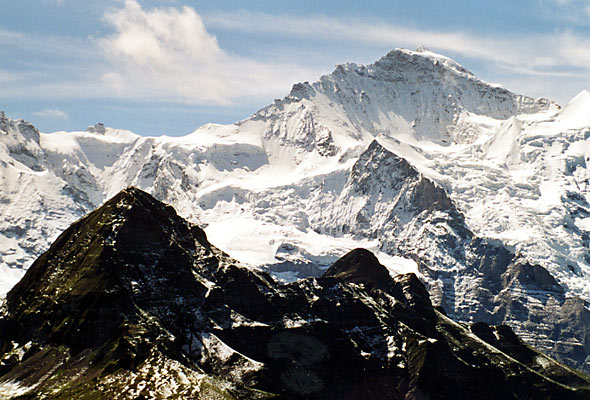Jungfrau, part of the Bernese Alps in Switzerland, stands as an iconic symbol of the Alpine landscape. Notable for the Jungfrau Railway, which has been transporting visitors to its majestic snow-laden peaks since the early 20th century, it offers breathtaking panoramic views. This mountain is not only a natural wonder but also a testament to human engineering achievement. The Jungfrau region, recognized for its historical significance, played a crucial role in Switzerland's tourism development, with its allure drawing mountaineers and nature enthusiasts for centuries.
Culturally, the Jungfrau is steeped in Swiss tradition and folklore, often depicted in literature and art as the quintessential Alpine experience. The nearby town of Interlaken serves as a cultural hub, offering insights into Swiss heritage with its traditional architecture and local festivals. Annually, the region hosts events like the Jungfrau Marathon, where participants from around the globe partake in a challenging yet scenic race, celebrating both athletic endurance and stunning natural beauty.
Geographically, Jungfrau is located in the Bernese Oberland region, alongside its sister peaks Eiger and Mönch. The mountain's impressive elevation, reaching about 4,158 meters, contributes to its cold, snowy climate all year round, making it a perfect destination for winter sports and alpine adventures. Unique features of the Jungfrau include the UNESCO World Heritage-recognized Aletsch Glacier, the largest glacier in the Alps, which underscores the mountain's ecological importance.
An intriguing fact about Jungfrau is her name, meaning 'young woman' in German, evoking the purity and beauty of the region. Furthermore, the Jungfraujoch, the highest railway station in Europe, provides an unparalleled gateway to explore the mountain's icy realm, serving as a base for activities such as ice climbing and glacier trekking.
 Roland Zumbühl, Arlesheim, CC BY-SA 3.0, via Wikimedia Commons
Roland Zumbühl, Arlesheim, CC BY-SA 3.0, via Wikimedia CommonsSwitzerlandEurope
Nearby Places
Mont Blanc(117 km)
Highest peak in Western Europe with glacier views, an emblem of natural beauty and alpine adventure.Annecy(160 km)
Alpine lake town with canals and medieval château, offering stunning landscapes and vibrant cultural scene.Bergamo(162 km)
Hilltop medieval city with Venetian walls, rich in history, culture, and stunning architecture.Colmar(176 km)
Alsatian wine town with colorful timber housesStrasbourg(225 km)
European capital with half-timbered buildings and Franco-German heritage.Neuschwanstein Castle(238 km)
Romantic castle that inspired Disney's designs, nestled in the Bavarian Alps and a testament to 19th-century romanticism.Log in to write a review.
Sustainable Travel Tips
Plan Mindfully
- Choose direct flights when possible
- Travel during off-peak seasons
- Pack light and bring reusables
- Prefer eco-friendly accommodations
At Your Destination
- Use public transport or walk
- Support local businesses
- Respect wildlife and habitats
- Choose activities with minimal impact
Daily Habits
- Reuse hotel towels
- Take shorter showers
- Turn off lights/AC when out
- Carry a reusable water bottle
